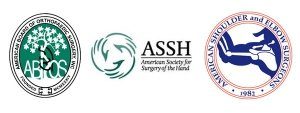A Patient’s Guide to Shoulder Separation (Injury to the AC or Acromioclavicular Joint) with Animated Surgical Video
Introduction
Shoulder separations are relatively common injuries. The separation is between the clavicle (collar bone) and the shoulder blade (acromion)—an injury to the acromioclavicular (AC) joint. These injuries are almost always the result of trauma, either a direct blow to the shoulder or a fall on an outstretched arm. These injuries are common in sporting activities
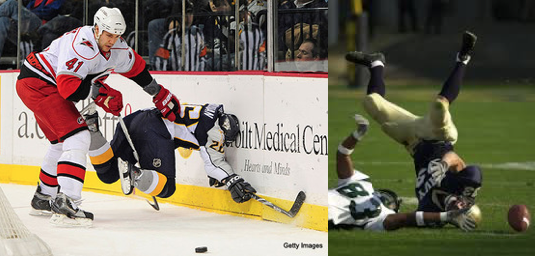
Direct blows to the shoulder may cause an AC separation
Anatomy
The shoulder serves as a connection between the chest and arm. The clavicle functions as a strut connected to the shoulder bone (scapula). The scapula articulates with the humerus and accounts for approximately 70% of shoulder motion (the remaining motion occurs between the scapula and the thorax). Your shoulder is made up of three bones: your upper arm bone (humerus), your shoulder blade (scapula), and your collarbone (clavicle).
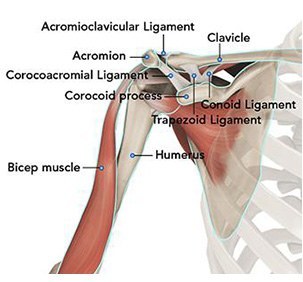
A right shoulder viewed from the front showing the clavicle, humerus and scapula.
The motion between the shoulder blade and scapula is a stable gliding surface over bursal structures and not prone to dislocation. However, the articulation between the humerus and scapula has little bony stability. This is because the ball of the humerus is large and the socket is small on the scapular side—think of the small amount of stability a golf ball has on a tee.
The inside layer of muscles gives the shoulder stability and motion above shoulder height and is called the rotator cuff—a series of 4 muscles
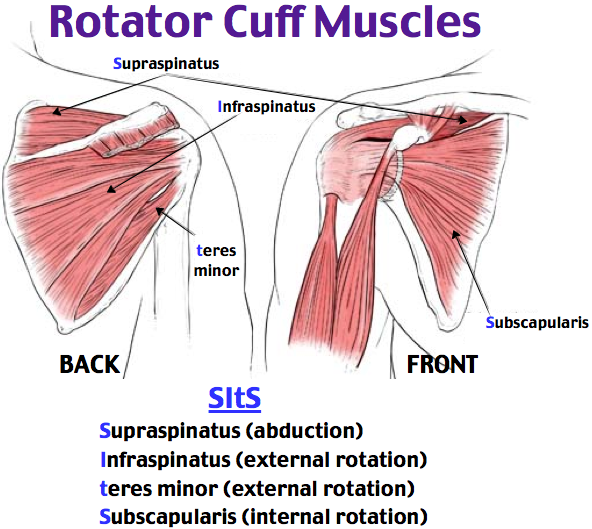
The muscles underlying the deltoid—the rotator cuff viewed from the back and front
The rotator cuff muscles are active especially in activities above shoulder height. These muscles provide the power to effectively function overhead. Rotator cuff tears lead to pain and dysfunction.
The ligaments which hold the clavicle attached to the scapula are most importantly between the coracoid process and the clavicle. The conoid and trapezoid ligaments are the most important ligaments for stability.
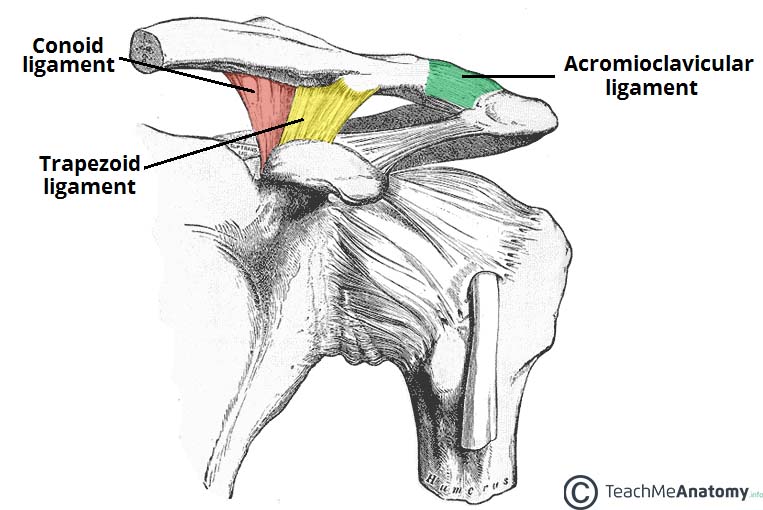
A left shoulder from the front showing the conoid (pink) and trapezoid (yellow) ligaments spanning from the coracoid process to the clavicle. The Acromioclavicular (green) ligament provide much less stability for the AC joint.
Therefore, a shoulder separation is not an injury to the shoulder joint. The injury is directed at the AC joint and the ligaments which stabilize the joint.
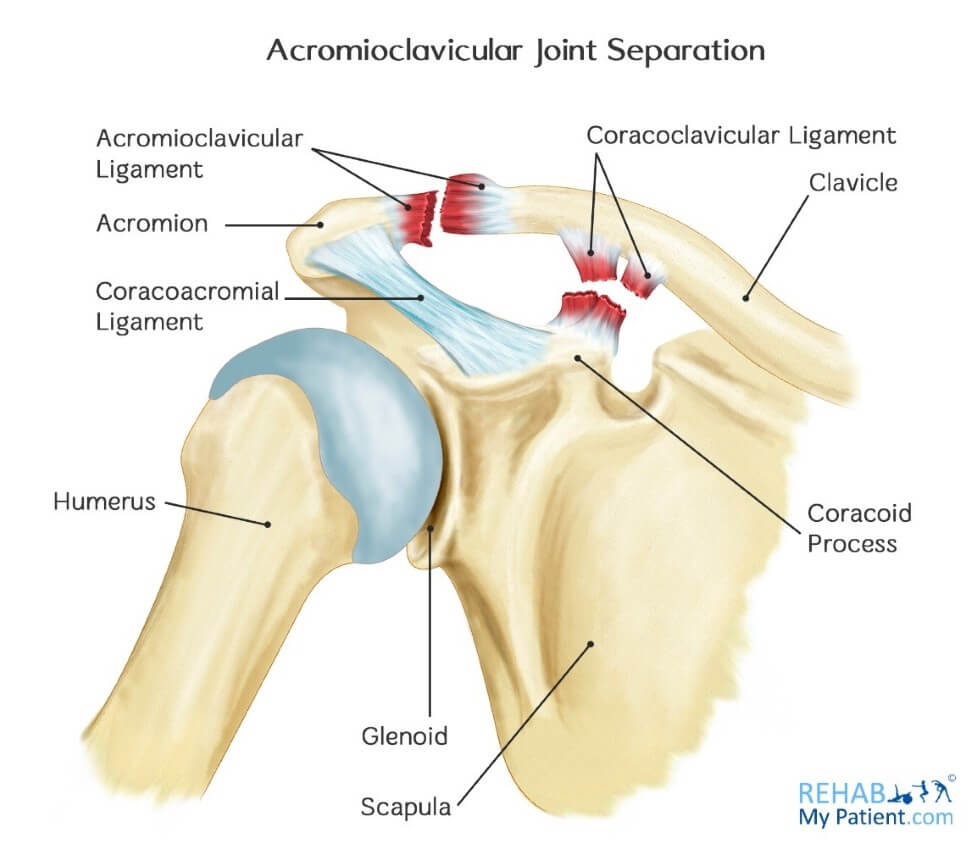
Shoulder separations occur due to injury to the stabilizing ligaments. Note AC injury does not injury the acromioclavicular ligament.
Diagnosis
Symptoms
Patients typically report pain and deformity after an AC joint injury. The arm typically is not comfortable hanging and many patients support the arm—hence the need for a sling. The amount of deformity is correlated with the degree of separation which is classified as 1 through 6.
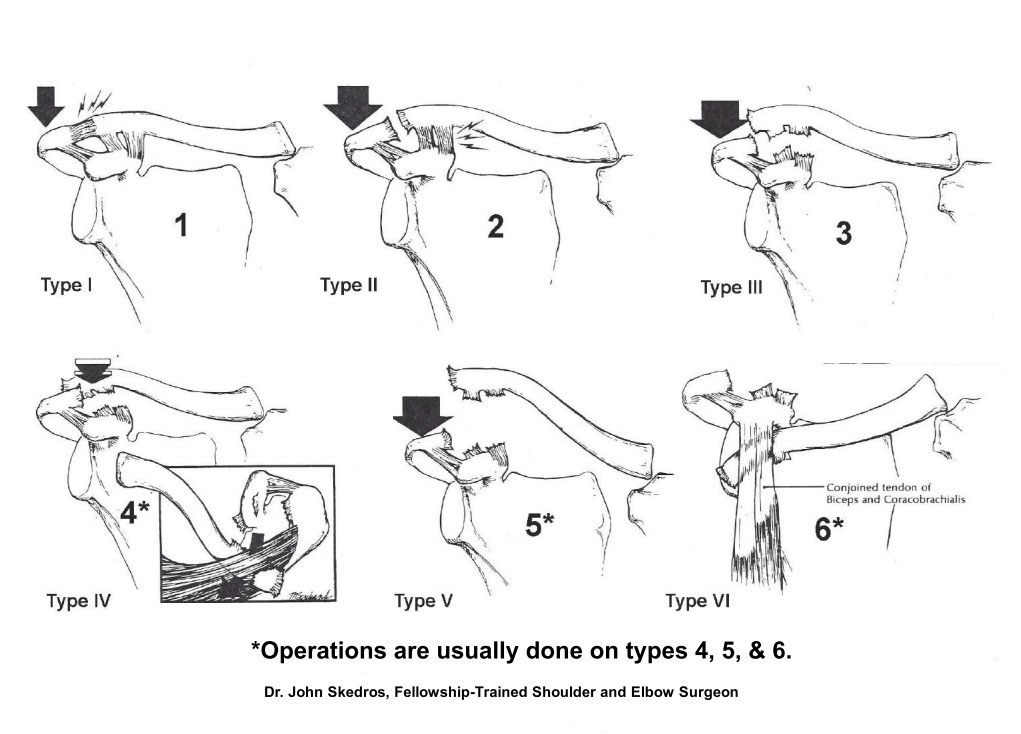
Classification scheme for shoulder separations
Surgeon Examination
After reviewing the patient’s symptoms, a review of their pertinent medical history and family history is obtained. The range of motion of the shoulder is measured in multiple planes. The strength of the shoulder in resisting motions is tested. The location of the deformity is determined and a neurologic and vascular exam of the extremity completed. The neck is examined to determine if any overlying nerve impingement may be causing shoulder pain and dysfunction.
Imaging Studies
X-rays of the shoulder are typically utilized for evaluation. Although x-rays do not image the soft tissue of the rotator cuff, they can add information regarding the presence of arthritis, fracture or dislocation.
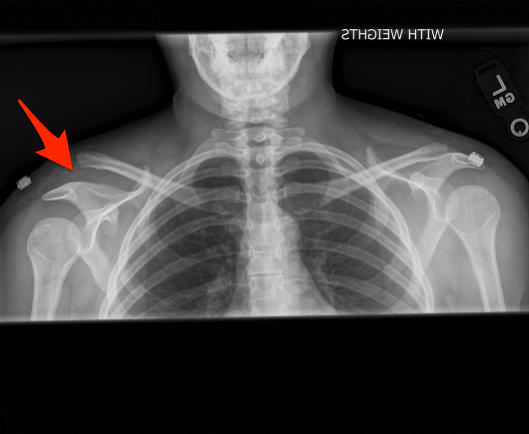
Frontal view of bilateral shoulders the red arrow indicates the shoulder separation of the right shoulder—contrasted with the contralateral normal shoulder.
Advanced imaging such as MRI or CT may be helpful in adding additional information, but are typically not required.
Treatment
Nonoperative
As discussed in the image above, most shoulder separations which are low grade and correspond to 1 through 3 in classification system do not require surgery. These injuries are immobilized for comfort and once comfort is obtained a rehabilitation program is begun. Patients are instructed in range of motion and progress to add work on strength. These programs can often be performed at home. Recovery and return to sport varies but ranges from 8-16 weeks.
Operative
Higher grade injuries (4 through 6) typically require surgery. Multiple surgical techniques can be employed, but all center on restoring anatomy and reconstructing the ligament complex. The surgeries typically require repair or reconstruction of the coracoclavicular ligaments. Typically these repairs are augmented with additional fixation of sutures, anchors or screws for fixation.
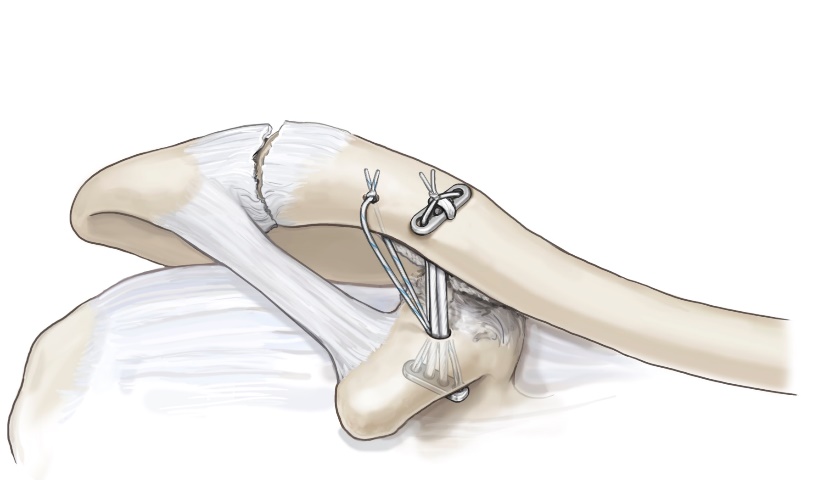
An AC reconstruction utilizing sutures and modified anchors
WATCH AN ANIMATED SURGICAL VIDEO OF TREATING AN AC SEPARATION
Often these repairs can be performed as an outpatient surgery utilizing regional or general anesthesia. Blood loss with this type of surgery is typically minimal and most patients will not require need for any blood thinning medication.
Rehabilitation
After surgery the arm is immobilized in a sling to allow for wound healing. Patients report pain after surgery, but the pain generally improves and the utilization of multimodal pain techniques have been shown to improve outcomes for patients. Night pain is typically the most problematic—but multimodal pain programs, heat, and sleeping elevated can improve this difficulty.
Many studies have shown that patients can successfully rehabilitate their shoulder on their own at home. Patients are typically guided through a therapy program and weaned from their sling over the first 8-12 weeks. Ingrowth of the tendon typically requires 4 months and patients, although direct ligament repair may occur somewhat sooner. Continued work on motion and strength allows form improvement for up to 1 year after surgery.


